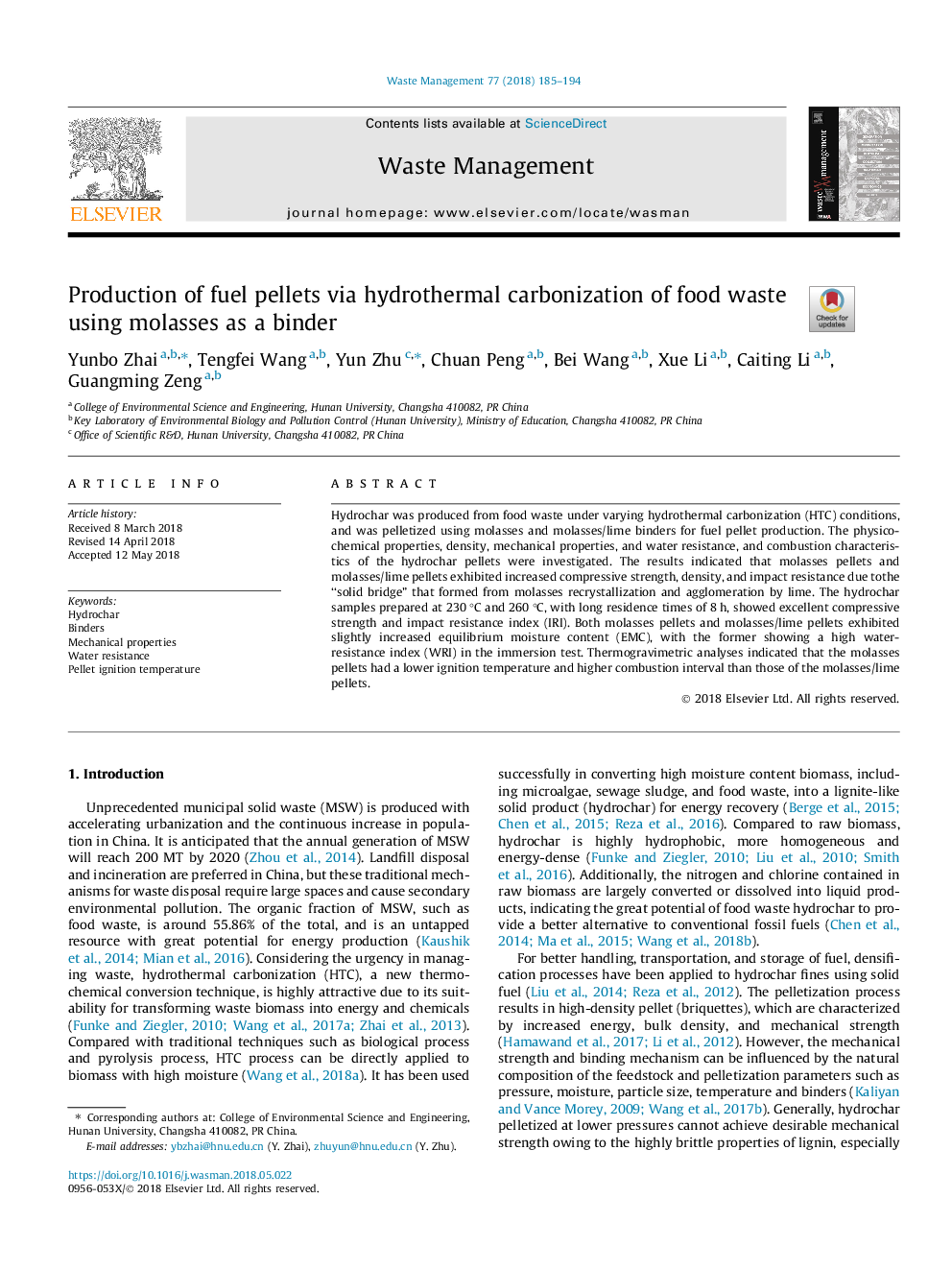| Article ID | Journal | Published Year | Pages | File Type |
|---|---|---|---|---|
| 8869680 | Waste Management | 2018 | 10 Pages |
Abstract
Hydrochar was produced from food waste under varying hydrothermal carbonization (HTC) conditions, and was pelletized using molasses and molasses/lime binders for fuel pellet production. The physico-chemical properties, density, mechanical properties, and water resistance, and combustion characteristics of the hydrochar pellets were investigated. The results indicated that molasses pellets and molasses/lime pellets exhibited increased compressive strength, density, and impact resistance due tothe “solid bridge” that formed from molasses recrystallization and agglomeration by lime. The hydrochar samples prepared at 230â¯Â°C and 260â¯Â°C, with long residence times of 8â¯h, showed excellent compressive strength and impact resistance index (IRI). Both molasses pellets and molasses/lime pellets exhibited slightly increased equilibrium moisture content (EMC), with the former showing a high water-resistance index (WRI) in the immersion test. Thermogravimetric analyses indicated that the molasses pellets had a lower ignition temperature and higher combustion interval than those of the molasses/lime pellets.
Related Topics
Physical Sciences and Engineering
Earth and Planetary Sciences
Geotechnical Engineering and Engineering Geology
Authors
Yunbo Zhai, Tengfei Wang, Yun Zhu, Chuan Peng, Bei Wang, Xue Li, Caiting Li, Guangming Zeng,
